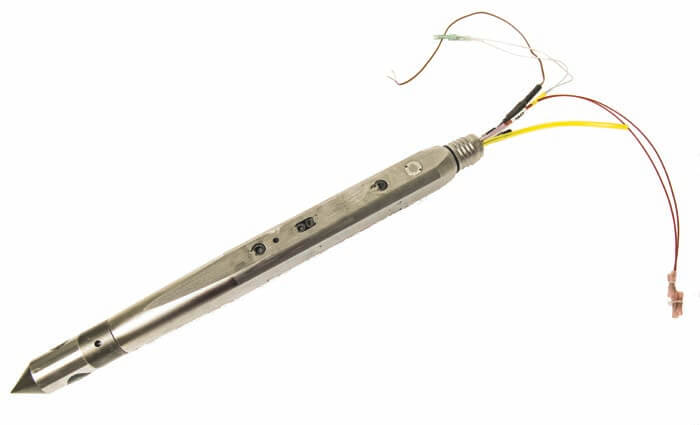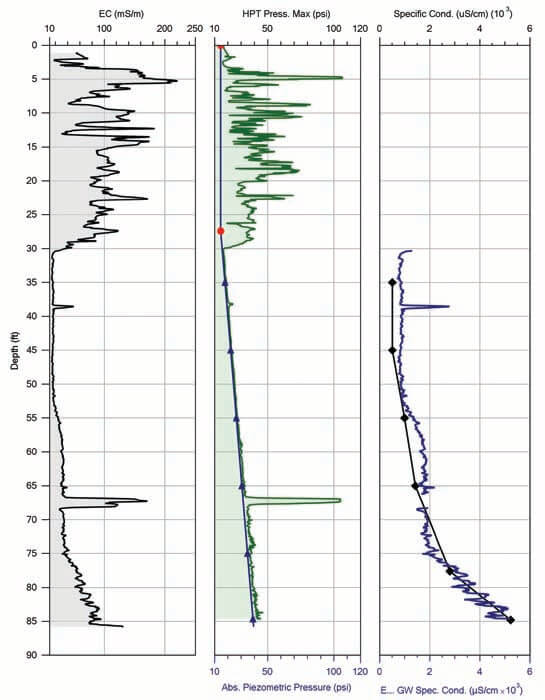
Thomas Christy, Vice President
Geoprobe® HPT is becoming one of the most common direct push logging tools used in site characterization. An HPT port is now included on ALL MIP and OIP probes (Figure 1). That’s right, it is no longer an option, it is there on every probe (each probe is also shipped with a blank plug, so if you don’t want to run HPT, you can cover this port).
Our reason for including an HPT port on all probes is simple; HPT just gives so much information with minimal additional effort. With HPT you get a very good graph of injection pressure (a proxy for permeability), piezometric profile, and predicted water table. If the operator correctly performs a few dissipation tests during the log, HPT can be used to create a graph of estimated hydraulic conductivity for the saturated portion of the log.
We have recently added an additional post logging calculation to the DI Viewer that can be performed using the HPT and Electric Conductivity logs: estimation of groundwater specific conductance. This calculation can be made in clean sands and gravels (which typically exhibit negligible electrical conductivity). The bulk electrical conductivity of these saturated sands and gravels is thus overwhelmingly influenced with the specific conductance of the pore fluid they contain. In these zones we can apply Archie’s law to make our calculation. An algorithm to detect applicable zones and make this estimate of specific electrical conductivity has been added to the latest version of the DI Viewer.
The groundwater specific conductance (GW SC) can be an important parameter in site characterization. It can indicate the presence of industrial or oil field brines. It can also help us to understand where we encounter groundwaters from different sources. Using this estimate, we can know the expected specific conductivity of a groundwater before we sample. Another interesting use is to indicate where certain soluble remediation fluids have been injected. Whatever the purpose, GW SC is a very easy estimate to make, and if you are already running an HPT log, it’s free.
An example of use of the groundwater specific conductance estimate can be seen in Figure 2. Note that in order to make this estimate, the operator must perform dissipation testing during the HPT logging process!
Contact Us
1835 Wall Street
Salina, Kansas 67401
Phone: (785) 825-1842
Photo Gallery



Related Videos
ID: 1960
ID: 1991
ID: 1992
ID: 1954
ID: 1965
ID: 279

